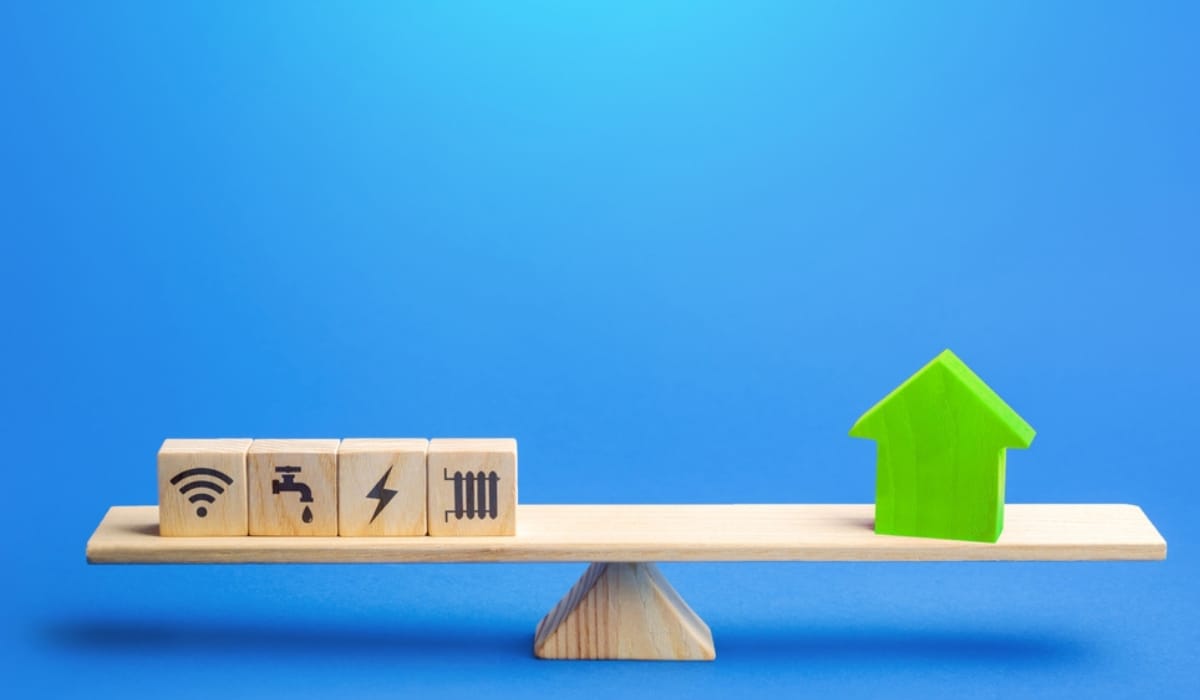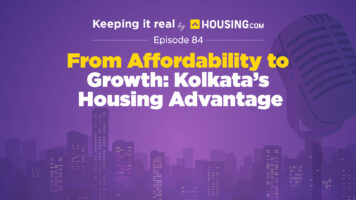When renting a house, the monthly rent is only one part of the decision-making process. The amenities offered by a property play an equally important role in ensuring comfort, convenience, and a better quality of life. From basic facilities such as water supply and security to lifestyle features like fitness centres and green spaces, the right amenities can make a rental property feel like home. Evaluating these factors not only helps tenants choose a house that fits their daily needs but also ensures long-term satisfaction and value for money.
See also: Location vs amenities: What should matter more?
Key amenities in a rental property
Before signing a rental agreement, it is important to evaluate the key amenities that impact everyday living. These facilities not only add to convenience but also influence safety, accessibility, and overall lifestyle.
1. Location-based amenities
The location of a rental property plays a decisive role in determining its overall suitability. A house situated close to public transport such as metro stations, bus stops or railway stations ensures hassle-free commuting and can save both time and money in the long run. Similarly, easy access to grocery stores, pharmacies, ATMs, hospitals and shopping complexes adds to everyday convenience, making it easier to manage routine tasks without extended travel.
For families, proximity to reputed schools, colleges and educational institutes is an important factor, while working professionals may prefer properties near business districts, IT parks or office hubs to reduce daily travel time. In addition, the safety of the neighbourhood cannot be overlooked. Well-lit streets, low crime rates and the presence of police stations or patrolling teams contribute significantly to peace of mind. Beyond essentials, recreational opportunities such as nearby parks, gyms, restaurants and entertainment zones also enhance the quality of life.
2. Security features
Security is one of the foremost concerns when choosing a rental property, as it directly impacts the safety of residents and their belongings. A gated community with controlled entry and exit points provides an added layer of protection, while the presence of 24×7 security guards and CCTV surveillance in common areas helps deter unwanted activity. Many modern apartments also come equipped with intercom systems or video door phones, allowing tenants to verify visitors before granting access.
Equally important are fire safety measures, such as smoke detectors, fire extinguishers, hydrants, and clearly marked evacuation routes within the building. These precautions not only ensure compliance with safety regulations but also provide reassurance during emergencies. For independent houses, features like secure boundary walls, sturdy locks, and alarm systems are valuable additions. Ultimately, prioritising a property with strong security infrastructure ensures a safe and worry-free living environment.
3. Water, electricity and gas supply
A reliable supply of basic utilities is essential when renting a house, as these directly affect daily comfort and functionality. Continuous access to clean water, whether through municipal pipelines, borewells, or overhead storage tanks, is one of the first aspects to check before finalising a property. In regions prone to water shortages, tenants should also verify if the society has alternative arrangements such as tankers or rainwater harvesting systems.
Electricity is another critical factor. A stable power connection with adequate sanctioned load ensures that all appliances can run smoothly without frequent tripping or outages. In many modern apartments, tenants may also benefit from provisions for inverters or central backup systems. Equally important is the availability of a safe and convenient gas supply. Properties with piped natural gas (PNG) connections provide added convenience and safety compared to cylinder-based setups, though designated space for gas cylinders is still important in houses without PNG.
4. Sanitation system
A proper sanitation system is a non-negotiable feature in any rental property, as it directly affects hygiene, health, and overall living conditions. Tenants should ensure that the house is connected to a reliable sewage network or has an efficient septic tank system in place, depending on the locality. Poor drainage or irregular sewage disposal can lead to unpleasant odours, waterlogging, and even health hazards, especially during the monsoon season.
Equally important is the system for solid waste management. Well-managed residential complexes generally have daily garbage collection, waste segregation, and designated disposal areas that keep the surroundings clean and pest-free. For independent houses, tenants should check whether local municipal bodies provide door-to-door garbage pickup and how efficiently it is managed. Bathrooms and kitchens should also be inspected for proper plumbing, leak-free fittings, and adequate ventilation to prevent dampness and mould.
5. Connectivity
Good connectivity is one of the most valuable amenities in a rental property, as it directly influences convenience and quality of life. A house that is well-linked to main roads, highways, and public transport options such as metro stations, bus stops, or railway stations makes commuting easier and more cost-effective. For professionals, this reduces travel time to workplaces, while families benefit from quick access to schools, colleges, and healthcare centres.
In addition to physical connectivity, digital connectivity is equally important in today’s lifestyle. Strong mobile network coverage and the availability of high-speed broadband connections are essential for working professionals, students, and families alike. Properties located in areas with fibre-optic or multiple internet service providers ensure uninterrupted connectivity, which has become especially critical with the growing trend of remote work and online education.
6. Parking
Adequate parking space is an important amenity to consider when renting a house, especially in urban areas where congestion and limited space are common issues. A dedicated parking spot for cars or two-wheelers not only offers convenience but also ensures the safety of vehicles against theft or damage. Covered parking further protects vehicles from harsh weather conditions such as heavy rain, intense sun, or dust.
For those who frequently host visitors, the availability of guest parking within the premises can be a valuable addition, preventing inconvenience during gatherings or family visits. In newer residential complexes, some properties also offer advanced features such as electric vehicle (EV) charging points, catering to the needs of modern tenants. Lack of sufficient parking often leads to conflicts with neighbours or the hassle of finding space on crowded streets, which can affect day-to-day living.
7. Ventilation
Proper ventilation is a crucial factor when evaluating a rental property, as it directly affects both comfort and health. Well-placed windows, balconies, and ventilators allow fresh air to circulate throughout the house, preventing dampness, odours, and the buildup of indoor pollutants. Good cross-ventilation also helps maintain a comfortable indoor temperature, reducing dependence on artificial cooling during the summer months.
Natural light is another important aspect of ventilation. Homes that receive ample daylight not only feel more welcoming but also help save on electricity costs during the day. Adequate ventilation in kitchens and bathrooms is particularly vital to avoid moisture buildup, which can otherwise lead to mould, mildew, and long-term structural damage. A house with proper airflow and natural lighting creates a healthier and more pleasant living environment, making it a key amenity to look for before finalising a rental property.
8. Furnishing
The level of furnishing in a rental property can greatly influence convenience and upfront costs for tenants. Fully furnished homes typically come equipped with essentials such as beds, wardrobes, sofas, dining sets, and kitchen appliances, making them ideal for those looking to move in quickly without the hassle of purchasing new furniture. Semi-furnished properties usually include basic fittings like modular kitchens, cupboards, fans, and lights, offering a balance between convenience and affordability. On the other hand, unfurnished homes provide tenants with complete flexibility to set up interiors as per their taste and budget.
Beyond furniture, built-in storage, quality of fixtures, and the availability of appliances such as geysers, air conditioners, or water purifiers also add significant value. Tenants should carefully evaluate the condition of the provided furnishings, ensuring they are functional and well-maintained to avoid repair costs later. The choice between fully furnished, semi-furnished, or unfurnished properties ultimately depends on lifestyle needs, duration of stay, and budget considerations.
9. Power backup
Reliable power backup is an essential amenity, particularly in areas that experience frequent outages. A rental property equipped with generators, inverters, or centralized backup systems ensures that basic electrical needs such as lighting, fans, refrigerators, and internet connectivity remain uninterrupted during power cuts. For multi-storey apartments, backup power also keeps essential services like elevators, water pumps, and security systems running smoothly.
Inverter-supported homes are generally sufficient for smaller households, while larger complexes often provide generator backup for common areas as well as individual flats. Tenants should confirm the extent of backup coverage, whether it applies only to common areas or also to specific appliances inside the home. Having a dependable power backup not only adds to comfort but also ensures safety and convenience in day-to-day living.
10. Clubhouse
A clubhouse has become a sought-after amenity in many modern housing societies, offering residents a dedicated space for leisure, recreation and community interaction. It often serves as a social hub where tenants can gather for events, celebrations, or casual meetups, fostering a sense of community within the residential complex.
Most clubhouses are equipped with facilities such as indoor games, lounges, libraries or multipurpose halls that can be used for private functions or society activities. For families, a clubhouse can be particularly beneficial, providing children and adults alike with safe and convenient recreational options without having to step out of the premises. While not an absolute necessity, the presence of a well-maintained clubhouse adds significant lifestyle value to a rental property, making it more appealing for tenants who seek both comfort and community living.
11. Sports and fitness facilities
Sports and fitness amenities are increasingly considered essential in rental properties, especially in urban areas where access to open spaces can be limited. Many housing societies now provide gyms, yoga rooms, or fitness centres, allowing residents to maintain a healthy lifestyle without the need for external memberships. These facilities are not only convenient but also save time and commuting costs for fitness enthusiasts.
For families, the availability of sports courts such as badminton, tennis, or basketball, along with indoor game rooms, adds to the recreational value of a property. Children benefit from safe, within-premises options for physical activity, while adults can pursue fitness goals or enjoy sports as a leisure activity. Swimming pools and jogging tracks, where available, further enhance the living experience by promoting health and wellness.
12. Open spaces and gardens
Open spaces and green areas within a residential property add immense value to the quality of living. In densely populated urban settings, landscaped gardens, courtyards, or community parks provide a much-needed escape from concrete surroundings. These areas allow residents to relax, spend time outdoors, and enjoy fresh air without leaving the premises.
For families with children, open spaces offer a safe environment for outdoor play, while older residents benefit from dedicated walking and jogging tracks that support an active lifestyle. Gardens also promote social interaction among neighbours, as they often serve as gathering spots for morning walks or evening relaxation. In addition, well-maintained greenery contributes to better air quality and creates a more calming and pleasant atmosphere. Though often overlooked compared to indoor amenities, open spaces and gardens significantly enhance the liveability of a rental property, offering both physical and mental health benefits to residents.
13. Maintenance and management services
Efficient maintenance and management services are vital for ensuring a hassle-free rental experience. A well-managed property or housing society takes care of essential services such as regular cleaning of common areas, timely waste collection, pest control, and the upkeep of lifts, water pumps, and security systems. These services not only maintain hygiene and functionality but also enhance the overall living environment for tenants.
In apartment complexes, resident welfare associations (RWAs) or property management teams often handle day-to-day operations and address tenant complaints. Their responsiveness in resolving issues such as plumbing leaks, electrical faults, or malfunctioning facilities can make a significant difference to residents’ comfort. Tenants should also check if maintenance charges are included in the rent or paid separately, and what specific services they cover.
Housing.com POV
While the checklist of amenities is extensive, it is important to note that not all facilities carry the same weight for every tenant. What truly matters is how well the amenities align with one’s lifestyle, long-term plans, and financial comfort. For instance, a young professional may prioritise proximity to public transport, high-speed internet, and fitness facilities, while a family with children may value schools, open spaces, and strong security more highly.
It is also worth remembering that an excess of amenities can sometimes lead to higher maintenance charges, which may not always be justified if the facilities are rarely used. Tenants should therefore assess which features add genuine value to their daily lives and which exist merely as attractive add-ons. In many cases, essentials such as uninterrupted utilities, safety measures, and proper maintenance have a far greater impact on comfort than luxury offerings like swimming pools or lavish clubhouses.
The most practical approach is to strike a balance, choosing a property that meets non-negotiable needs while offering select lifestyle benefits within budget. A rental home should not only provide shelter but also create an environment that supports well-being, convenience, and long-term satisfaction. Ultimately, the “right” amenities are those that enable tenants to feel at ease in their space, making the house truly feel like home.
FAQs
How do amenities affect the rental value of a property?
Properties with better amenities generally command higher rents. However, the premium is often justified by added convenience, security, and lifestyle benefits. Tenants should weigh the cost of amenities against how frequently they will be used.
Should tenants prioritise newer properties for better amenities?
Newer constructions often offer modern amenities like EV charging points, smart security systems, or energy-efficient designs. However, older properties in prime locations may provide better space, affordability, or community living, making the choice dependent on individual priorities.
Can tenants negotiate amenities before finalising a lease?
Yes, in many cases tenants can request additions such as extra storage, new appliances, or minor upgrades before moving in. Landlords are often willing to make improvements to secure reliable tenants, especially for longer lease terms.
What amenities are most useful for tenants who work from home?
For remote workers, stable internet connectivity, quiet surroundings, proper ventilation, and dedicated workspace areas within the property are particularly valuable. Access to nearby cafés, co-working spaces, or libraries can also enhance productivity and work-life balance.
Do amenities impact the resale or investment value of a property?
Yes. Properties with modern, well-maintained amenities often appreciate faster and attract more demand in the rental and resale market. Amenities such as safety features, green spaces, and energy-efficient systems contribute significantly to long-term investment value.
| Got any questions or point of view on our article? We would love to hear from you. Write to our Editor-in-Chief Jhumur Ghosh at jhumur.ghosh1@housing.com |







